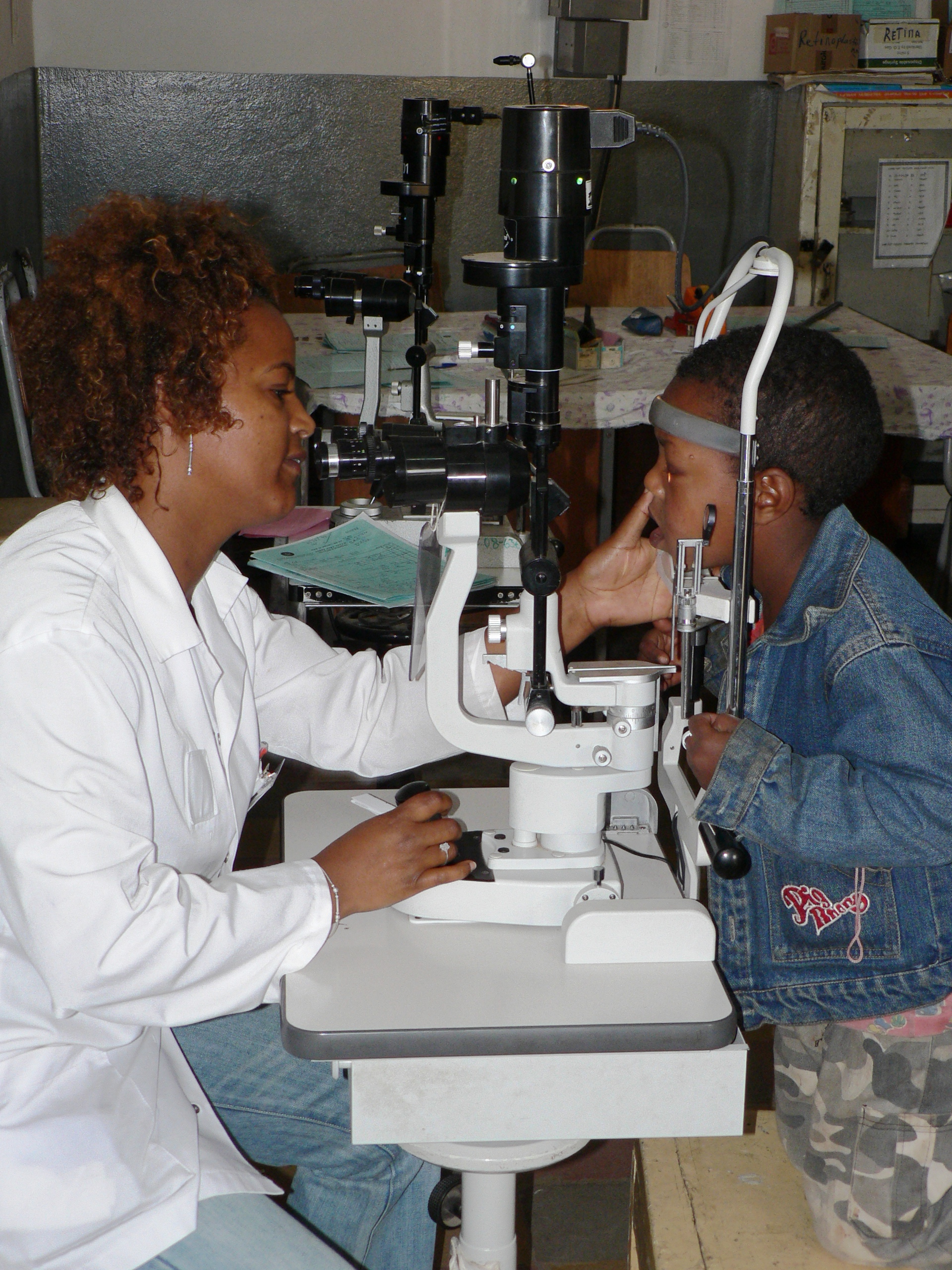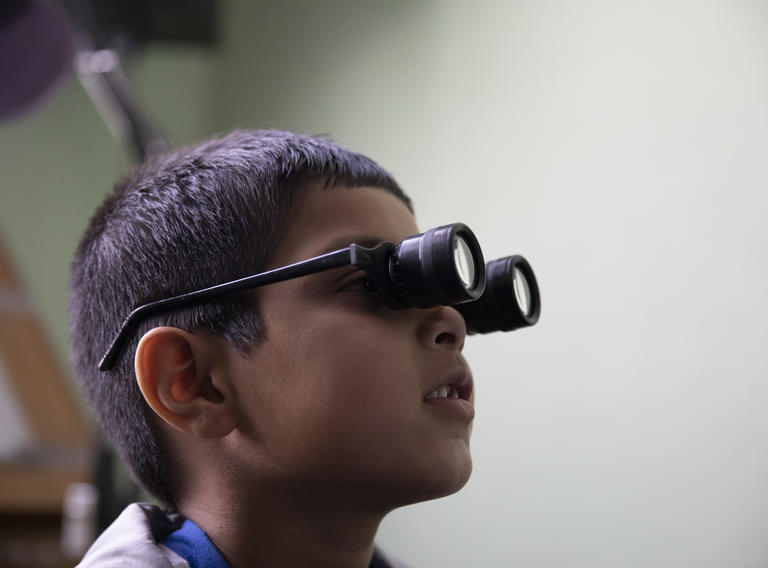World Health Organization
For over 30 years, Lions Clubs International Foundation (LCIF) has partnered with the World Health Organization (WHO), the United Nations specialized agency for health and well-being. This partnership runs several global initiatives in the area of eye care service development to prevent irreversible vision loss.
LCIF and the WHO collaborate in the areas of blindness prevention, visual impairment treatment, and the prevention and control of diabetes, with emphasis on diabetic eye disease. In this collaboration, the WHO is responsible for activity implementation and technical oversight, while LCIF is responsible for providing funding, publicity and local Lions involvement.
Prevention and control of diabetes and vision loss
Diabetes statistics and impact
There are an estimated 537 million adults living with diabetes - 1 in 10 persons. This number is predicted to rise to 643 million by 2030 and 783 million by 2045. Over three in four adults with diabetes live in low- and middle-income countries.
It is estimated by the WHO that diabetes will be the seventh leading cause of death by 2030.
Diabetic retinopathy and its importance
The first step in avoiding irreversible vision loss from diabetes-related causes is to ensure cooperation between diabetes management systems and diabetic retinopathy care service.
The SightFirst Advisory Committee (SAC) approved a US$400,000 grant in April 2012 to develop and implement a simple assessment tool for diabetes and diabetic retinopathy.
Tool for Assessing Diabetes and Diabetic Retinopathy (TADDS)
TADDS (available in English only) is used to conduct a baseline assessment of access to diabetes and diabetic retinopathy care, to estimate the level of cooperation between these two branches of health care, and to assess the financial risk for patients. It is recommended to start with this tool when planning for a SightFirst service project involving diabetes and diabetic retinopathy care.
This simple 46 question tool makes it possible to conduct a situational analysis with minimum effort, define service provision levels, and to identify the priority gaps to be addressed in ensuring universal access to diabetes care and to prevention and treatment services of diabetic retinopathy.
TADDS Actions have taken place in more than 45 countries since its development, and they continue to provide needed information on how to improve access to care for people with diabetes and with vision-threatening diabetic retinopathy. The TADDS Action (including planning, implementing and stocktaking) can be supported by LCIF.

Elimination of avoidable childhood blindness
Childhood blindness and its global impact
Childhood blindness remains a significant problem globally, especially in developing countries. Eye diseases and conditions occurring in early childhood can result in permanent vision loss or blindness if undetected and/or left untreated.
The major causes are well known, and are largely determined by socioeconomic status and access to primary health care and eye care services. The WHO recommends universal newborn screenings, which include eye examination and inspection of surrounding structures.
The Lions-WHO project for the elimination of childhood blindness
Since 2001, LCIF and the WHO have partnered on the “Lions-WHO Project for the Elimination of Childhood Blindness”. Through this project, LCIF has given nearly US$7 million in grants to establish tertiary pediatric eye care centers throughout the six WHO regions.
To-date, 73 centers have been established in 30 countries. Three new centers are being created in Kenya, Chad and Madagascar.
These child friendly eye care centers are identified using available evidence in collaboration with the Ministry of Health, Lions Clubs, and and the WHO; the support this partnership offers includes infrastructure improvement (not creation), pediatric ophthalmology equipment purchase and human resources training on-site with world-class international experts. The presence of a trained pediatric eye professional is a necessary prerequisite. Through this project, professionals will receive additional training and/or refresher courses by renowned pediatric eye specialists.
Support is also provided for primary level education, referral system development, family awareness and advanced service provision at the community level.
Integration into the National Health System and Lions involvement
After two years of operation, the centers are incorporated into the national health system, and continue to be operated with government resources. The centers are frequently supported by local Lions Clubs, which are often associated with the services offered to the poorest children and families.
Centers are identified as LIONS – WHO Child Eye Care centers by a plate which recognizes the support and collaborative effort of the two organizations.


Get involved
If you want to help Lions continue their historic commitment to preserving the precious gift of sight, we encourage you to make a donation today.
